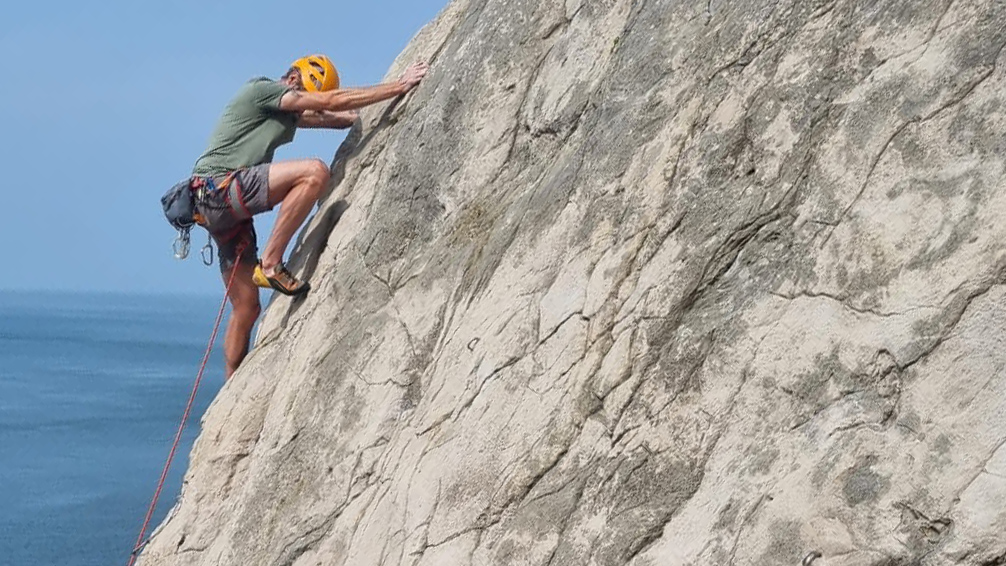
There’s no doubt that sea cliffs have a unique charm, one that draws climbers and mountaineers back time and time again. The drama of battling your way up a sea cliff, while crashing waves thunder below, is spectacular. Coastal cliffs are dynamic places; the setting is never quite the same from one day to the next thanks to the ebb and flow of the tides and the weather. They’re often remote and difficult to reach too, which only adds to the sense of adventure. It’s an arena of substantial allure for the vertically inclined.
However, knowing how to start sea cliff climbing can be tricky for the uninitiated. The pursuit has a number of additional challenges piled – like the rock layers of a towering sea stack – on top of the already involved world of trad climbing. The last thing you want to do is bite off more than you can chew and end up having an epic.
To guide you on your way, we asked our mountaineering expert to reveal how to start sea cliff climbing, while also detailing the challenges it entails and the equipment you'll require.
How to start sea cliff climbing
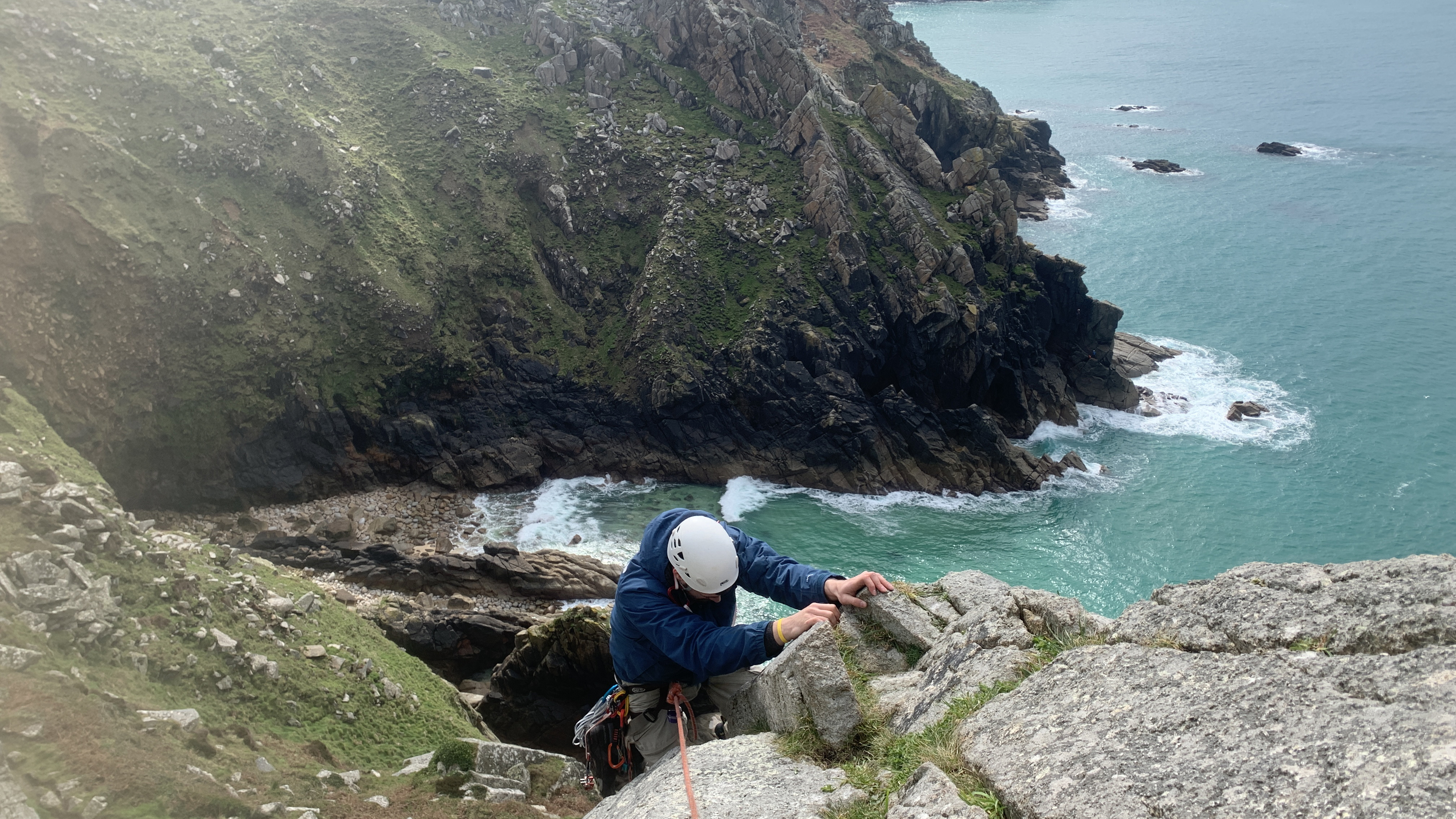
Here's 7 steps to take in order to start sea cliff climbing. For more detail on each, scroll further down this guide.
- Get plenty of trad experience – additional challenges make sea cliff climbing that bit more involved
- Learn to rappel – many routes are only accessible via a rappel (abseil)
- Lean how to ascend a rope with prusiks – this will enable you to escape a route in an emergency
- Climb with a more experienced partner – learn the ropes and avoid the hazards
- Start with grades you’re comfortable with – introduce yourself to the new environment slowly
- Learn to read the tides – you don’t want to be belaying with the fishes
- Check access restrictions – sea cliffs can have seasonal restrictions that mean you can’t climb there
Meet the expert
What is sea cliff climbing?
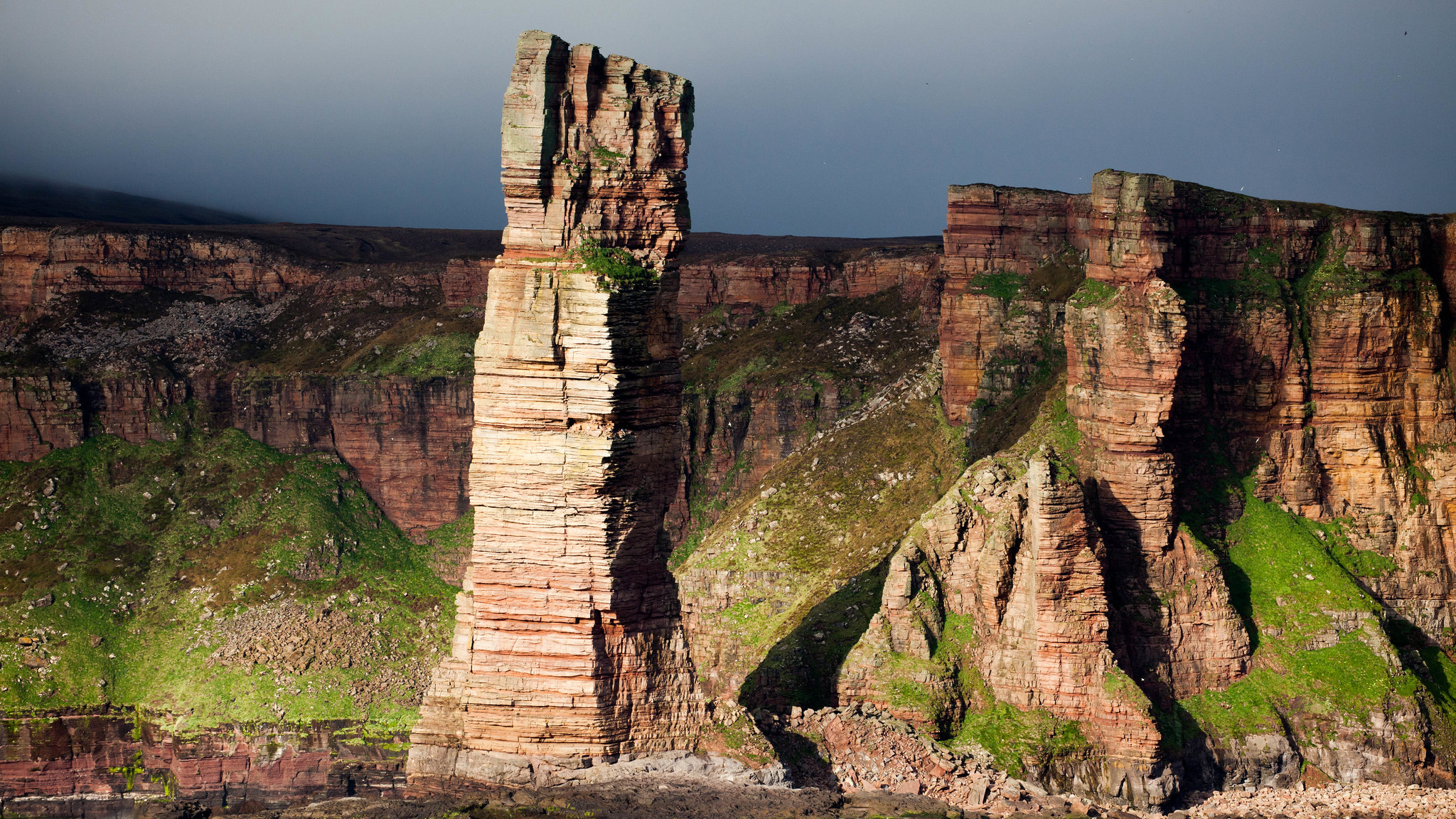
“There’s nothing more rewarding than topping out on a climb at a remote sea cliff with just the wind, the waves and a few seabirds for company, knowing that you have been to a special place that very few others have experienced.”
Guy Molyneux, Climber
Sea cliff climbing is exactly what it sounds like, the pursuit of climbing sea cliffs. It’s a form of trad climbing that’s adored by rock climbers for its dramatic settings and the additional challenges they bring. Coastal cliffs and dramatic sea stacks provide the playground and there are loads of incredible places to practise, from mainland coastlines to remote islands.
There are a number of challenges involved in sea cliff climbing that other forms of trad may not have to contend with. Due to this, routes can often be quite committing and it's normal for the top of the route to be the safest place, rather than the bottom.
What are some of the additional challenges sea cliff climbers face?
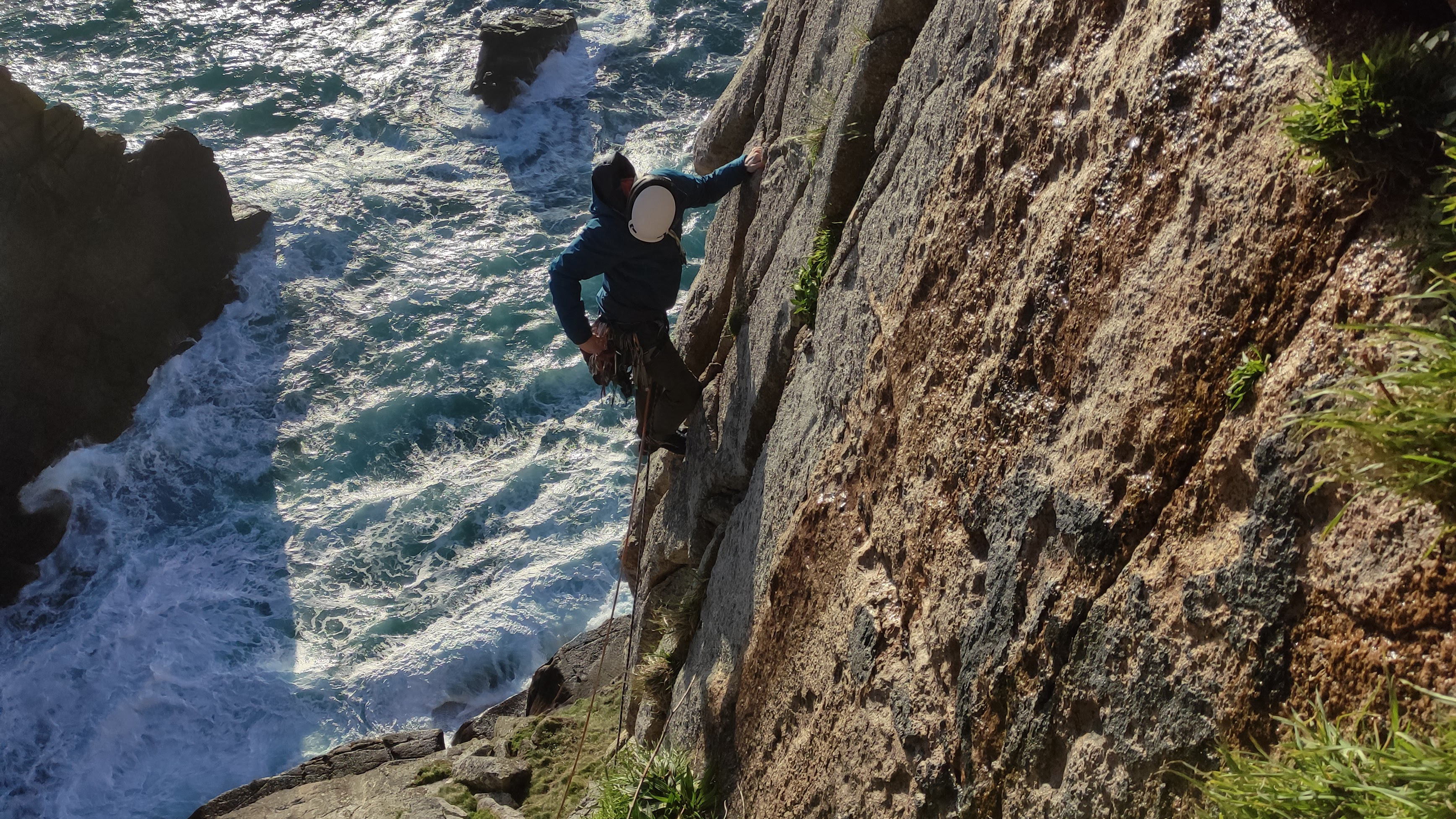
- The tides have to be carefully considered, as you don’t want to lose your gear, or worse, at high tide.
- The weather can be changeable on the coast and cliff faces are often very exposed to the elements.
- The noise from crashing waves and the wind can make hearing your climbing partner more difficult than on most crags.
- Finding your chosen route can be tricky, as you may not be able to back away from the cliff enough to properly assess the intricacies of the face.
- Your safe haven is often at the top of the route, rather than the bottom, so the ability to get up to the top by any means is paramount for safety.
- Topping out can be difficult when the rock makes way to earthen terrain that can be very loose.
- Access to cliffs can be restricted at certain times, often due to the conservation of native wildlife or military training exercises.
How to start sea cliff climbing
Here, I reveal the 7 steps you'll need to take in order to start sea cliff climbing:
Get plenty of trad experience
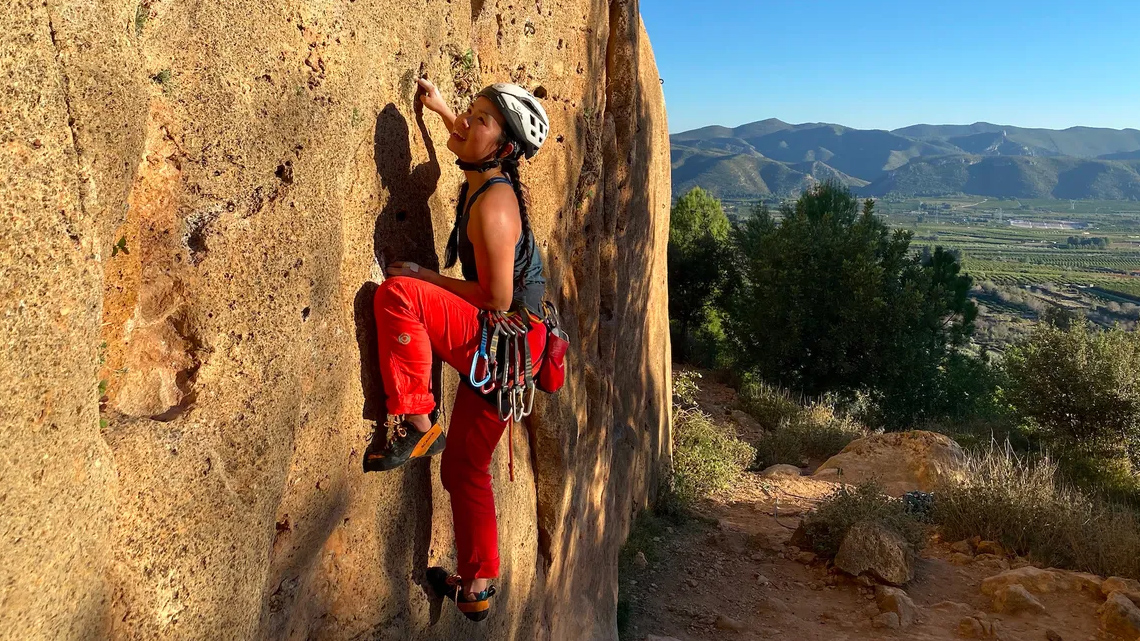
As sea cliff climbing poses additional challenges to trad climbing, it’s worth getting plenty of trad experience under your belt. This way, you won’t be juggling learning to place gear, how to build an anchor and effective verbal communication with all the extra difficulties the sea cliffs can throw at you.
The best way to build up your trad experience is by first booking a rock climbing instructor to learn the appropriate techniques in the correct way and then to join more experienced climbers on the crag. If you don’t know any climbers, join a climbing or mountaineering club. Not only will this advance your skills but you’ll also meet lots of like-minded people and you’ll undoubtedly have some rollicking adventures too. It’d also be very likely that such a club will have sea cliff climbing meets in their calendar once you’re ready to take your skills to the cliffs.
Learn to rappel
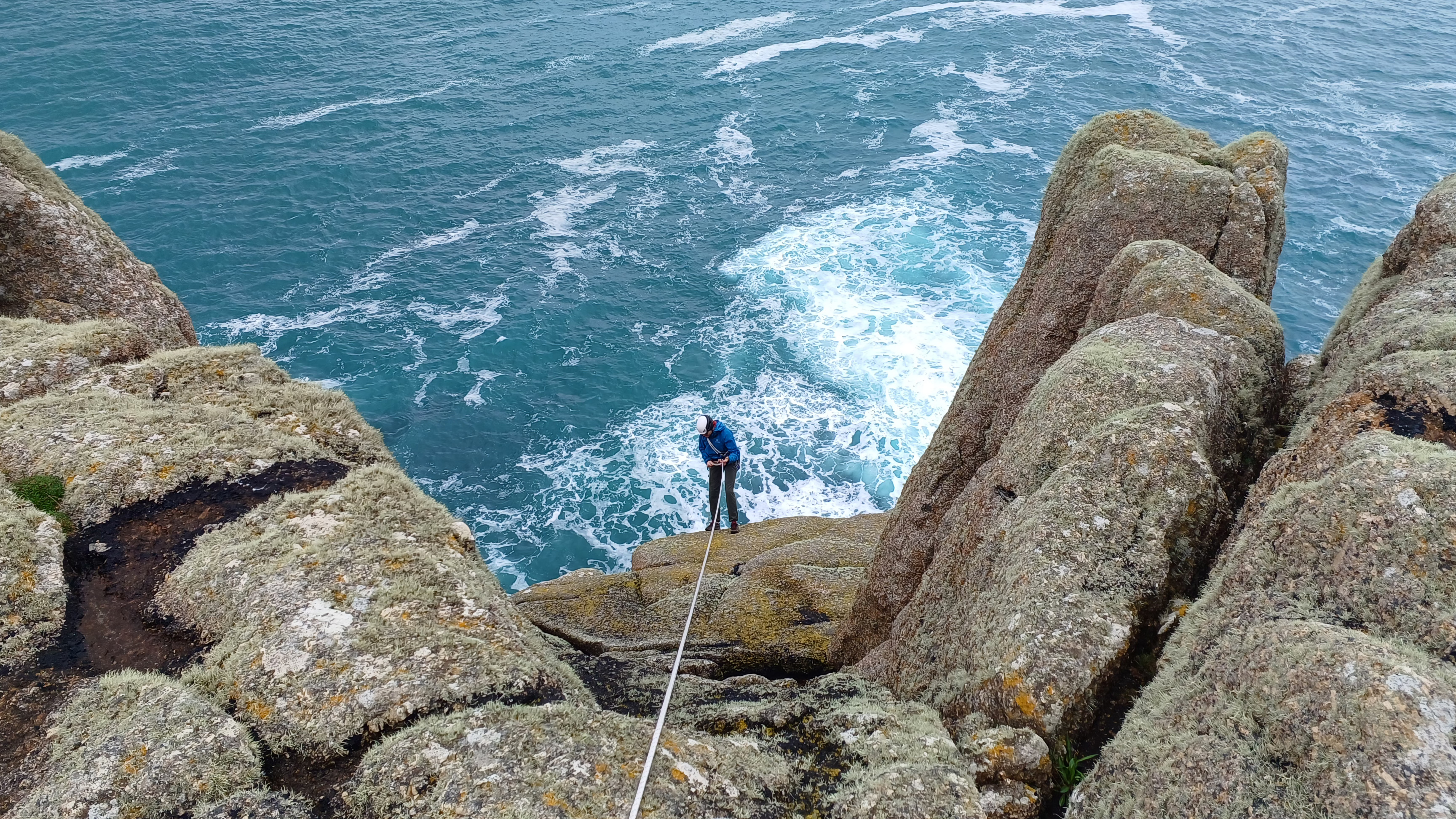
Unlike a roadside cliff, a moorland escarpment, mountain crag or a former quarry, there are many sea cliffs that you simply can’t walk to the bottom of, even when the tide is fully out. This means that to access many routes, you’re going to have to rappel (abseil) from the top. It’s likely that if you’re some way into your climbing journey, you’ll have already mastered the skill. Having a separate rappel rope, as well as your main climbing rope, is an excellent idea, as it gives you an emergency escape option…
Learn how to ascend a rope with prusiks
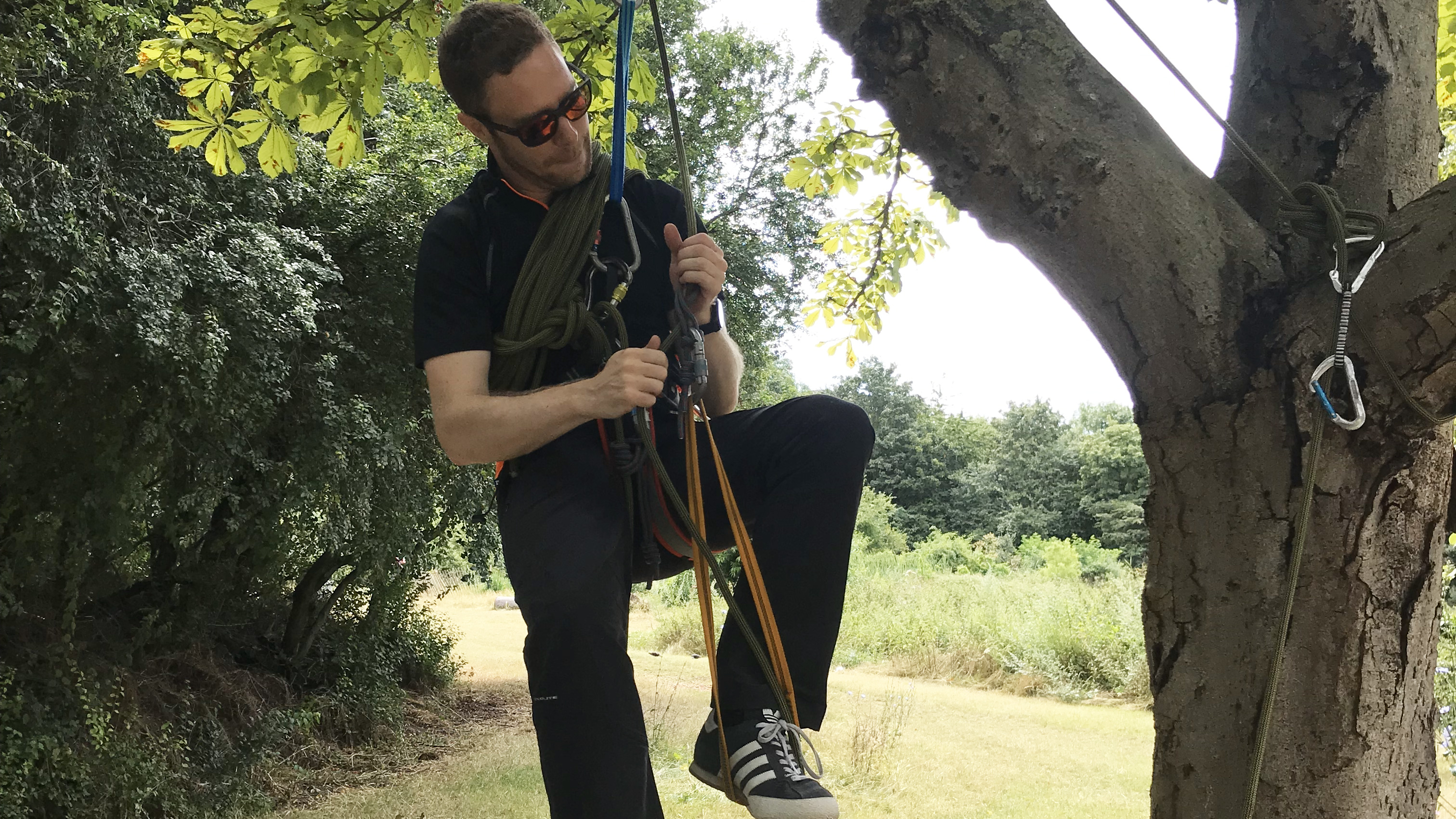
As the top of a route is your safe place – rather than the bottom as is the case with many trad climbing scenarios – it’s wise to have an emergency method of ascending your rappel rope.
Prusiking is a method whereby you can climb a rope using two loops, one attached to your harness and another as a foot loop. The loops are attached to the rappel rope with a prusik knot, a friction hitch that can be slid up the rope when unweighted, but grips tight when weight is applied. It allows the climber to literally climb up the rope, moving the prusik loops upwards. It’s quite a slow and laborious process, but most climbers agree that it’s preferable to drowning.
The same technique is used in mountaineering as a way of escaping the jaws of a crevasse, so if you are an aspiring alpinist, it’s all good practice. I used a tree in a London park (see above image) to introduce myself to the technique.
Climb with a more experienced partner
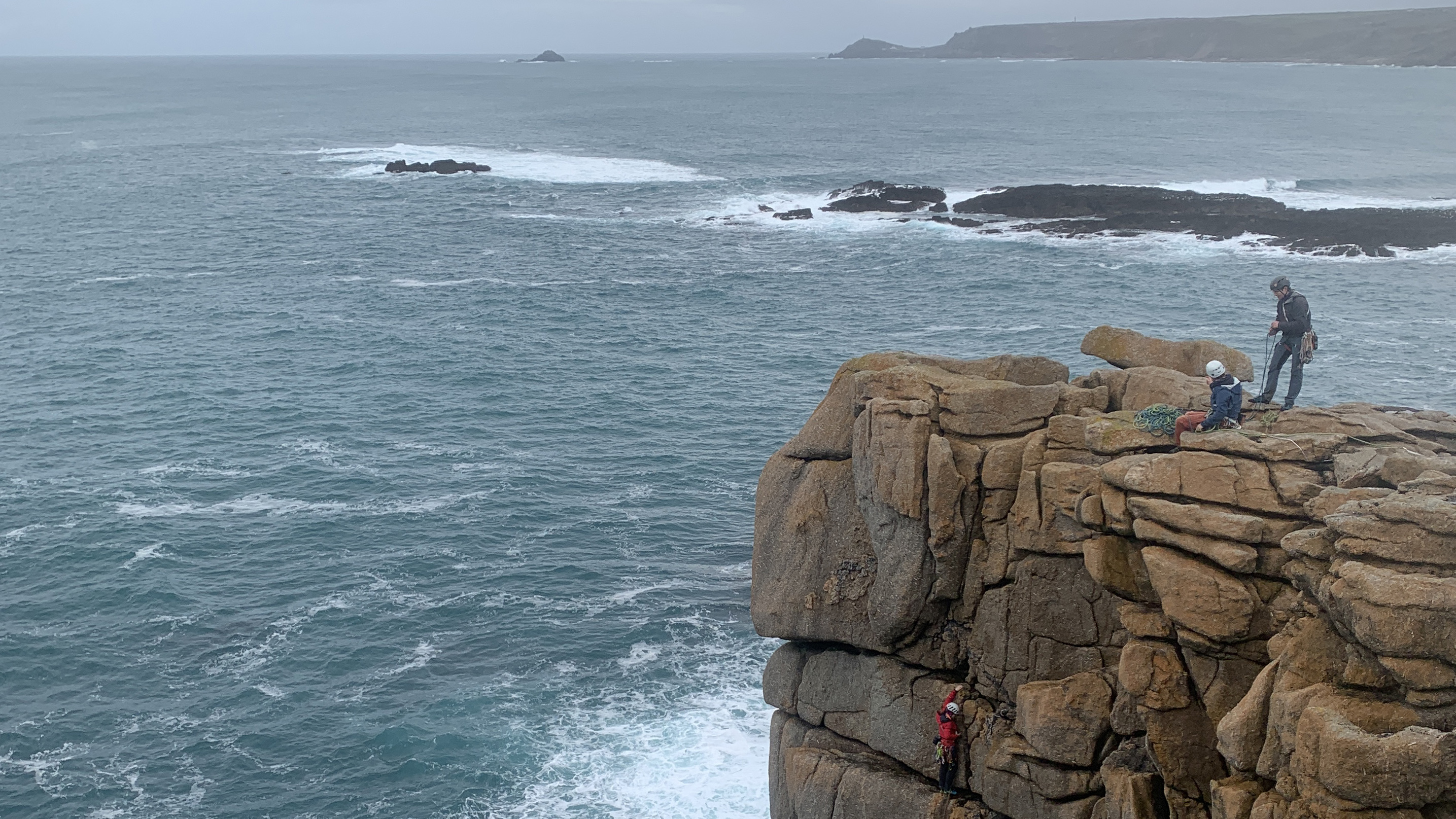
It’s definitely worth climbing with a more experienced partner, one who’s done plenty of sea cliff climbing before. They’ll be able to show you the tricks of the trade and how to deal with some of the unique challenges the sea cliffs provide, such as how to karate chop an aggressive seagull mid-pitch. More likely, they’ll introduce things like how to build bombproof belays to rappel from, some non-verbal communication techniques to overcome the noise of the crashing waves and they’ll take the lead on choosing routes with the tide and potential escape routes in mind.
Start with grades you are comfortable with
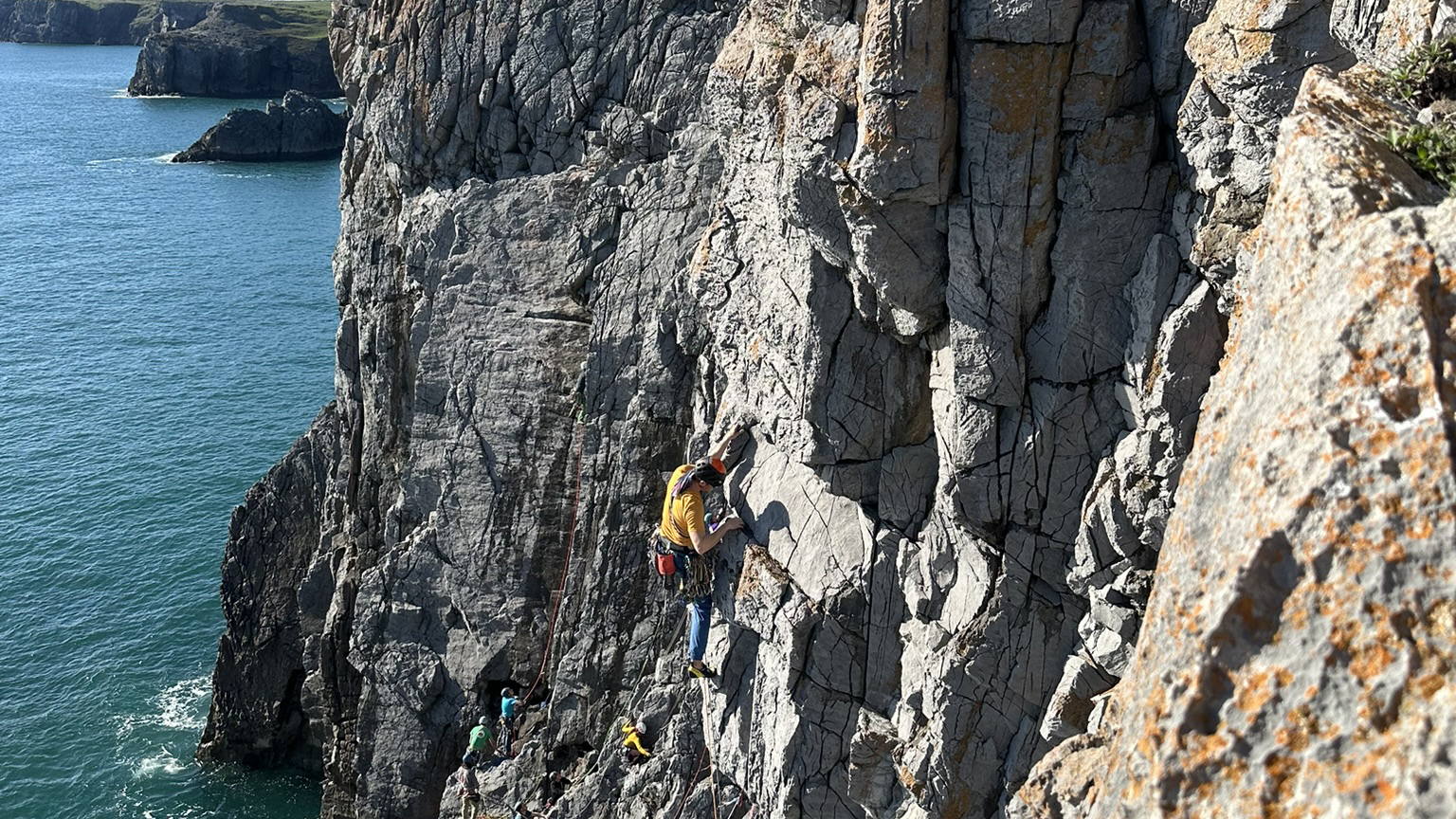
As ever with a new environment that poses fresh challenges, get into the swing of things by climbing at a grade you are comfortable with first. It's the additional challenges involved with sea cliff climbing that should occupy your attention to begin with, before you start worrying about pushing on to the next grade.
If you end up on something you can't climb, you may not be able to descend to safety. Hopefully, you'll have thought about escape routes or have the means to ascend the rope. Remember, it's the top of the route that's the safest place on a sea cliff climb. So, the last thing you want to do is jump in at the deep end, as you may actually find yourself in the deep end – of the open ocean.
Learn to read a tide chart
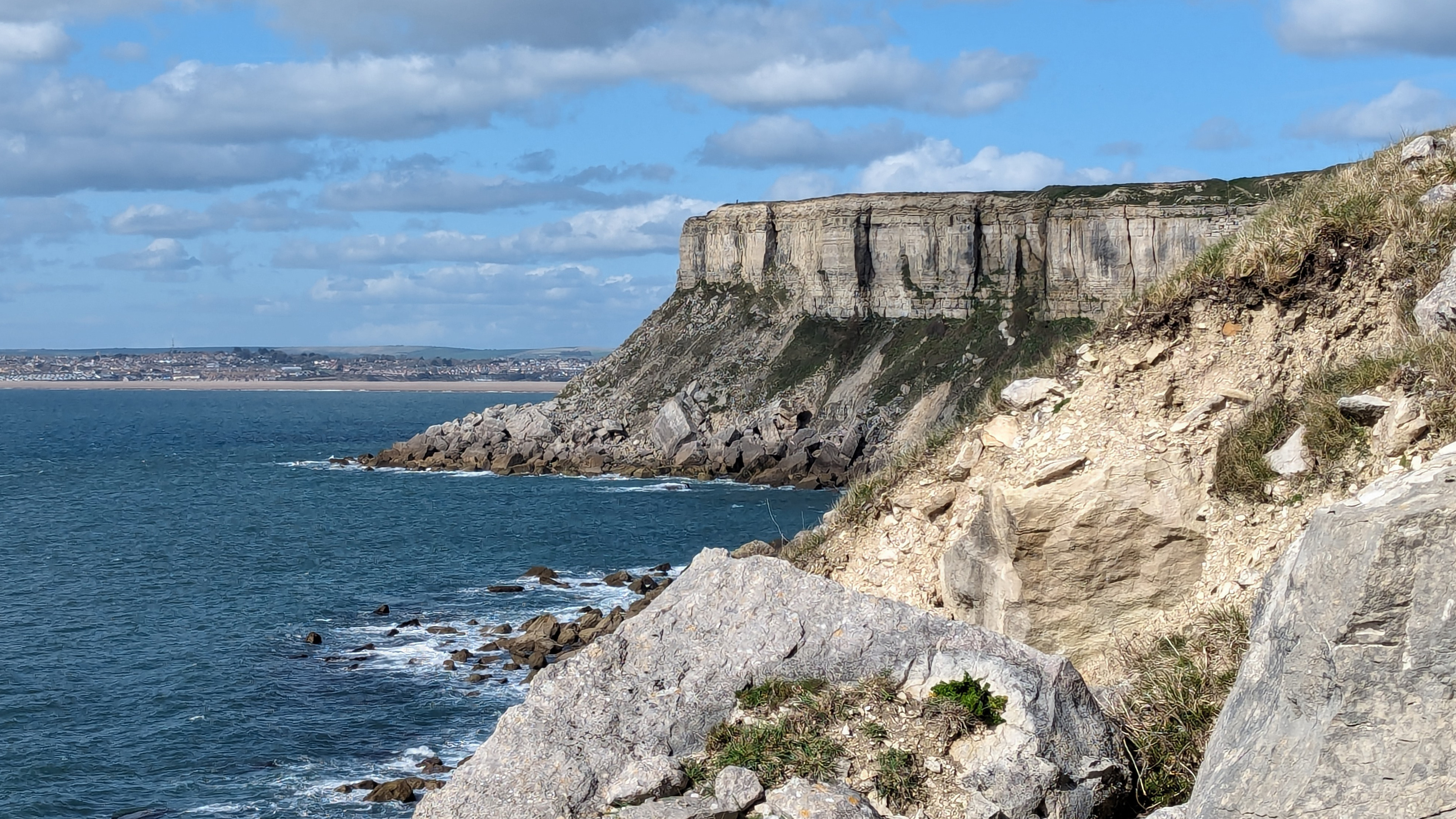
An additional complication, and one of the things that makes sea cliff climbing so alluring for many, is the tides. Routes can be completely cut off by high tides, meaning you can’t even start them. Even worse would be to be halfway through a difficult pitch before realising that in a few minutes your belaying partner is going to be underwater.
So, learning how to read a tide chart is essential for burgeoning sea cliff climbers. Good practice is to select non-tidal routes when the tide is coming in and to opt for tidal routes when the tide is receding. An improving situation is always preferable to avoid catastrophe’s like getting cut off by the swirling waters.
Check access restrictions
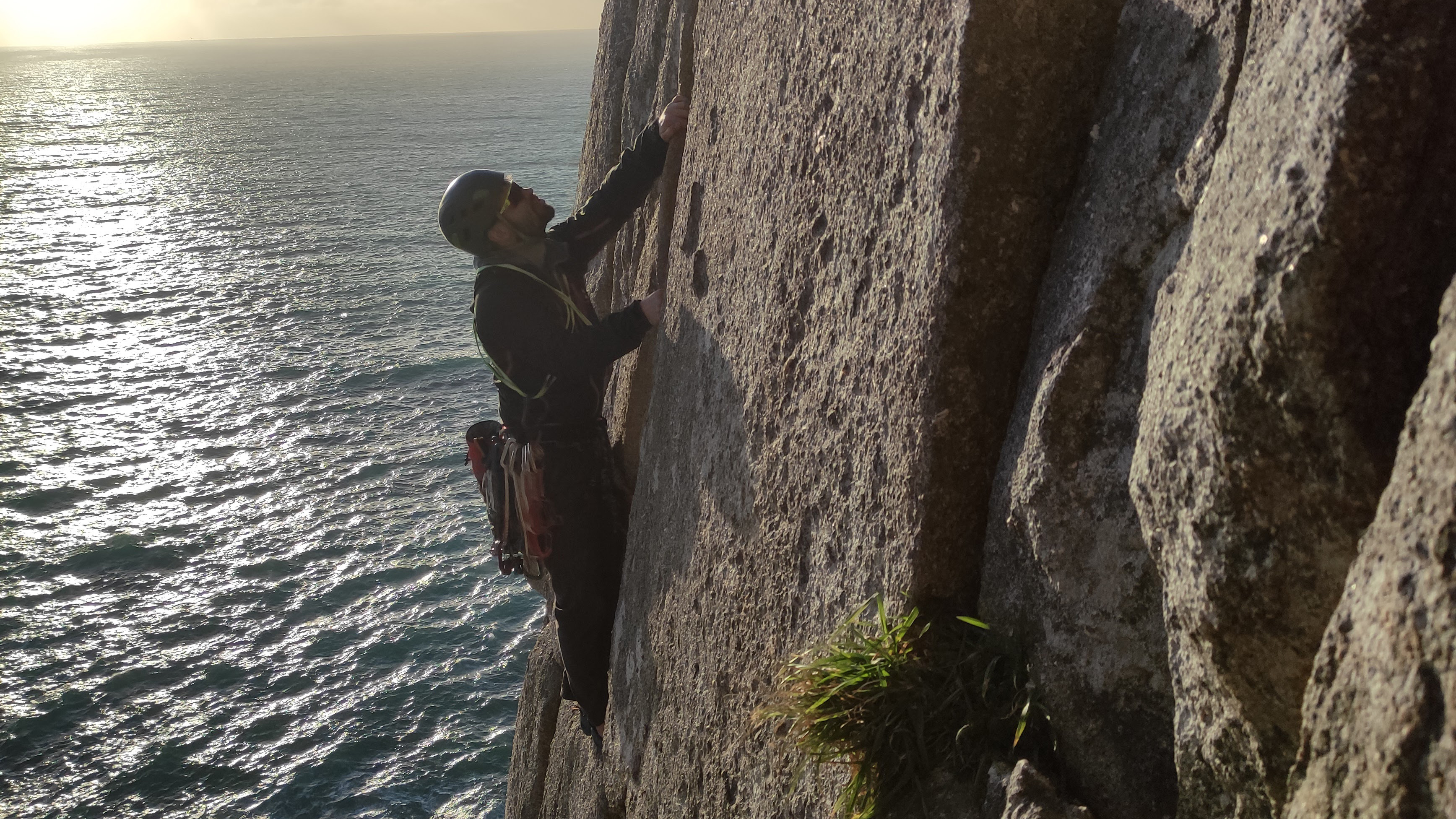
Many cliffs in protected coastal regions have seasonal restrictions put in place to protect the local birdlife. It may be that you won’t be able to climb there during the nesting season, so it’s worth doing your research beforehand. Another reason a section of coast may be off limits is military use. In the UK, for example, there are many stretches of coast where the land is owned by the Army.
What equipment do you need?
The climbing gear list for sea cliff climbing is pretty much the same as standard trad climbing kit, with the exception of an additional rope for rappelling and some prusik cords.
- Helmet – Protects your head in the event of a fall and from tumbling rocks. Should be replaced immediately if damaged.
- Harness – A padded climbing harness is most comfortable and a model with at least four gear loops and a central belay loop is recommended.
- Rock boots – Tight fitting with sticky rubber soles that allow maximum precision and grip on the cliff. Scrambling routes and easier climbs could also be done in approach shoes, which offer some of the grip and precision of climbing shoes with the comfort of hiking shoes.
- Rope – For sea cliff climbing, you should be looking for at least 50 meters, while you’ll want a second dedicated rope for rappelling.
- Belay device – Either a manual breaking device or an assisted braking device that the rope is fed through the create friction
- Carabiners – Oval or D-shaped metal hooks close with a gate – some have snap-gates, while others have screwgates.
- Quickdraws – Usually between 10 and 25 cm in length, these consist of two snap-link carabiners linked by a tape sling.
- Slings / webbing – Useful for making use of rock spikes as runners or anchors.
- Chocks – The different sized and shaped nuts and hexes that can be placed into the rock to create runners or anchors.
- Camming devices – Known as cams, these are spring-loaded mechanical devices that can be fitted into cracks in the rock as runners or anchors.
- Nut key – a superb piece of kit that makes removing awkwardly placed protection much less troublesome.
- Prusik cords – these are what enable you to climb up the emergency rope.
You may not need all of this to get started, as it’s like you’ll be climbing with a more experienced partner who’ll undoubtedly already have a suitable rope, slings, quickdraws, cams, nuts and hexes.







